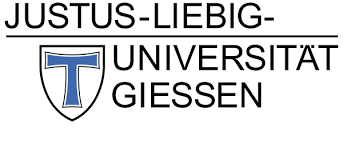New Paper Alert: “A shift from cattle to camel and goat farming can sustain milk production with lower inputs and emissions in north sub-Saharan Africa’s drylands”
In their recent publication in Nature Food, Jaber Rahimi (Institute of Meteorology and Climate Research, Karlsruhe Institute of Technology, Germany) and co-authors find that shifting herd composition in north sub-Saharan Africa’s (NSSA) drylands by decreasing cattle and increasing the proportion of goats and camels can secure milk production while decreasing greenhouse gas (GHG) emissions, water usage and feed consumption (Figure 1).

Climate change is putting milk production from cattle-dominant dairy systems in NSSA under increasing pressure, threatening livelihoods and food security. In their paper, Rahimi et al. combine livestock heat stress frequency, dry matter feed production and water accessibility data to understand where environmental changes in NSSA’s drylands are jeopardizing cattle milk production. They show that between 2001 and 2020 environmental conditions worsened for approximately 17% of the study area.
The authors observe that a shift in herd-composition in response to changing ecological conditions has already been documented in some pastoralist communities in NSSA drylands (Figure 2). In these communities, cattle have been partially replaced with small ruminants (mainly goats) and/or camels that require less feed and water per kg of milk produced, and produce less GHGs.
In order to better understand the trade-offs involved, Rahimi et al. modelled the impact of livestock species composition on aggregate milk production and water/feed consumption of all dairy livestock across dryland NSSA. They also assessed the environmental impact of changes in herd composition across all species in the region.
They found that overall, increasing goat and camel populations by ~14% (~7.7 million) and ~10% (~1.2 million), respectively, while reducing the dairy cattle population by ~24% (~5.9 million), resulted in the ideal herd composition; increasing milk production by 5.7%, while decreasing water consumption (-15.3%), required feed resources (-11.2%), and GHG emissions (-7.9%).
Three of the paper’s co-authors, Jaber Rahimi and Klaus Butterbach-Bahl, from Karlsruhe Institute of Technology (KIT), Germany, and Michael W. Graham, from the International Livestock Research Institute (ILRI), Kenya, are directly involved in the INSA project. The research project benefited from an INSA funded secondment of Michael Graham (ILRI, Kenya) to KIT in 2021.

Reference: Rahimi, J., E. Fillol, J.Y. Mutua, G. Cinardi, T.P. Robinson, A.M.O. Notenbaert, P.J. Ericksen, M.W. Graham, K. Butterbach-Bahl (2022). A shift from cattle to camel and goat farming can sustain milk production with lower inputs and emissions in north sub-Saharan Africa’s drylands. Nature Food 3, 523–531. https://doi.org/10.1038/s43016-022-00543-6



















